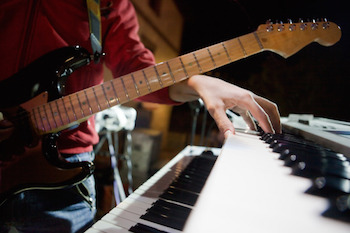Thinking of purchasing a new digital piano? In today’s world, a digital piano can be the perfect choice for a budding musician. They can be very practical if you are short on space and don’t have the room for a traditional piano; they are easy to transport, which can be a big benefit if a budding musician starts up his own band; and they are easy to maintain, which means no regular tuning sessions to keep it in top form.
If you have already started the hunt for a good digital piano, you’ve probably already noticed there can be a big difference in pricing. There is a reason for that.
So the first question to have answered about a digital piano is – where does it get its sound? When each piano manufacturer sets out to create a digital piano, it must record each individual sound of each individual key. This process is called modeling. They record it at different volumes and different ranges, so that when you press a key on the digital piano, it will create a rich sound that mimics playing an acoustic piano.
Modeling is what distinguishes a high end piano from a low end piano. Higher priced digital pianos will have more complexity in their tonal quality. Lower priced digital pianos can have very simple mechanisms, and in some cases be quite tinny in sound quality.
While sound quality is a major difference between high end and low end digital pianos, it isn’t the only difference. For some piano players, there is something equal in importance to sound … it’s the feel.
When an acoustic piano is played, the notes have a “feel” when they are touched and played. By putting different amounts of pressure on the keys, you can change the sound that is produced.
With lower end digital pianos, it’s a one touch one sound process. With higher end pianos, they incorporate that “feel” into the piano, giving digital piano players the same capabilities of creating sound by depressing keys at the desired level.
In addition to the importance of sound and feel, a digital piano can have many other characteristics that separate the two.
- Speakers
- Output quality
- Recording device
- Additional sounds and features
- Casing and cabinet material
Many differences occur between the high end and low end offerings, and also between the different manufacturers. In some cases, there is very little pricing variance to move into more features and more practical comfort. It all depends on the desire of the musician, and the desire of the sound being produced.
If you’ve never seen a variety of digital pianos in action, stop by and let us show you the differences. The education you’ll receive just by looking can quickly show you where the differences really lie, and help you be more comfortable with your final selection.

